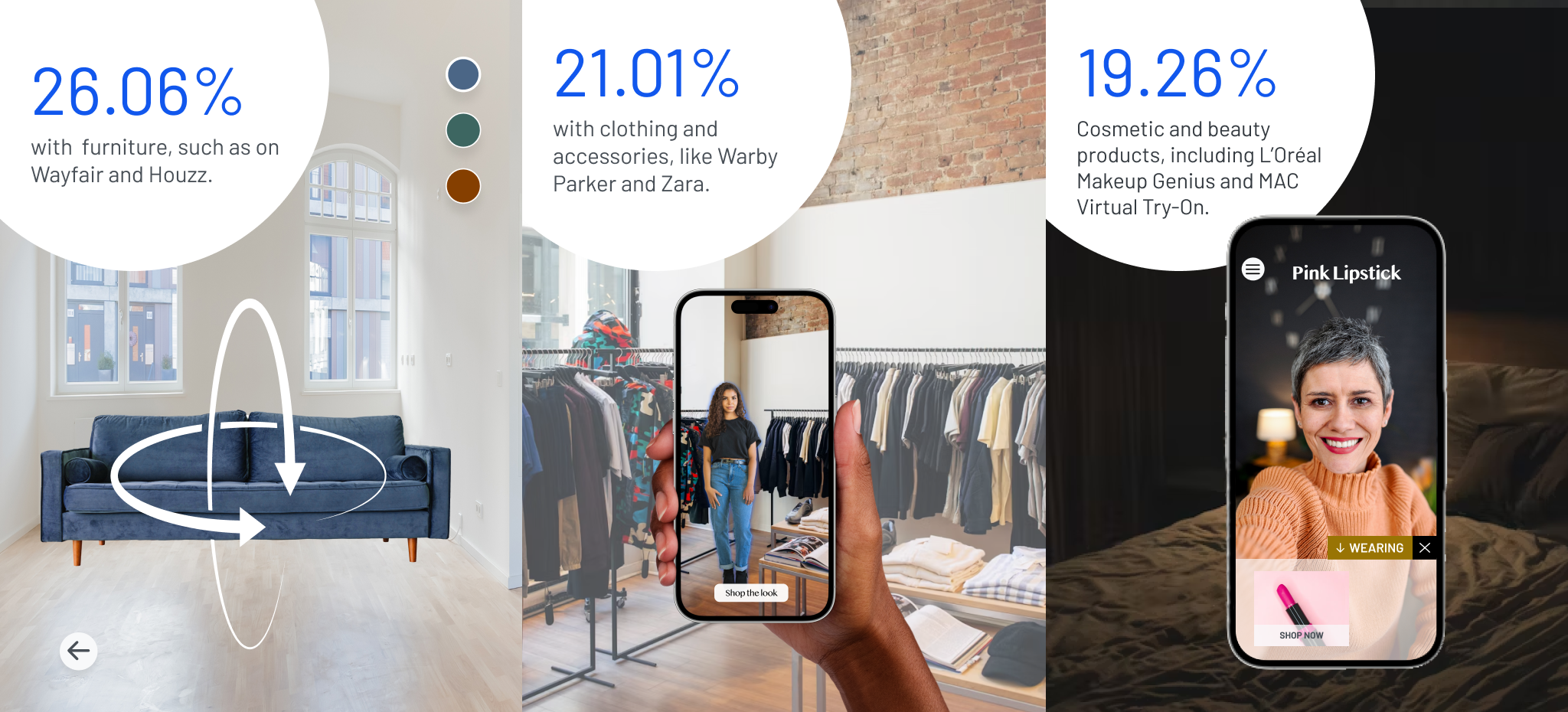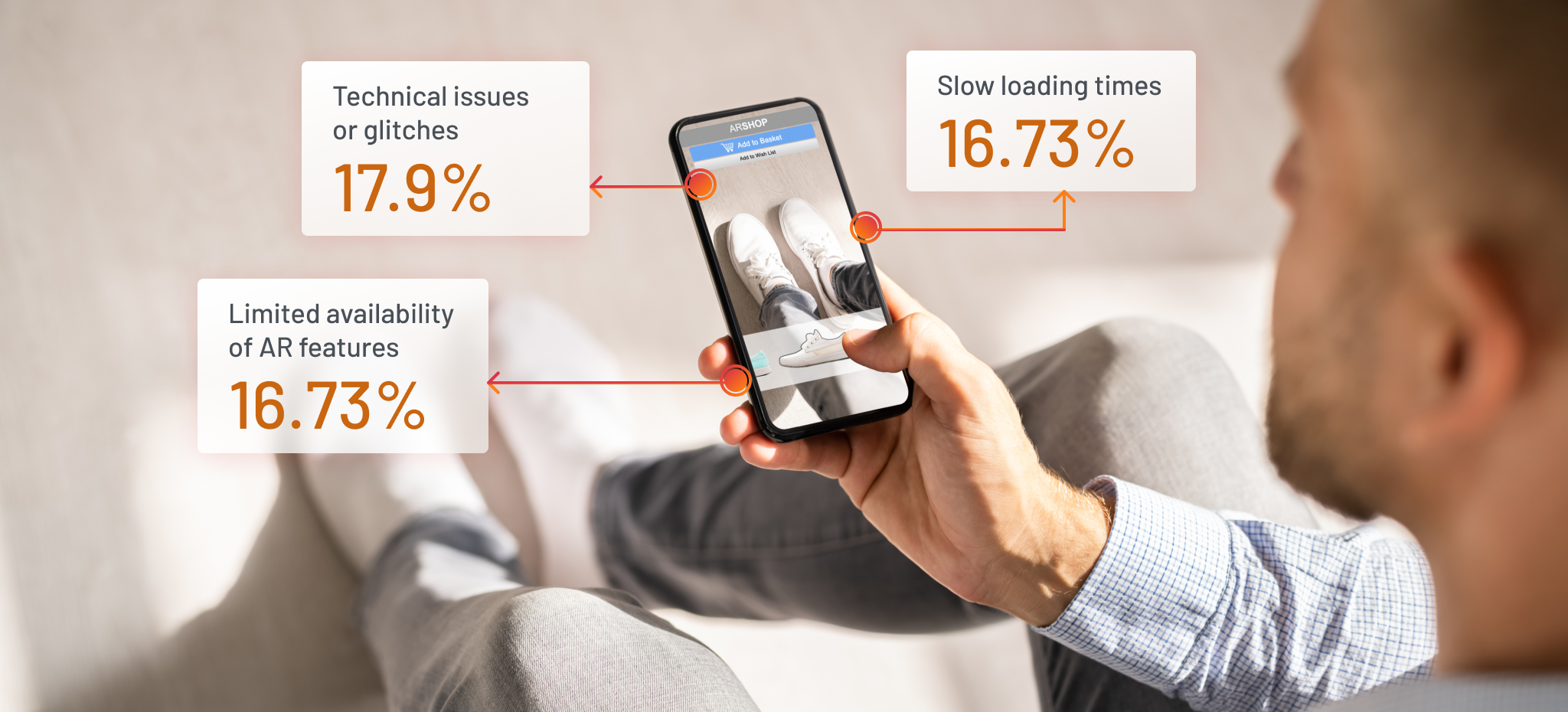Julia Hergart· Author
As ecommerce continues to evolve, one technology stands out on the horizon: Augmented Reality (AR). Its integration into online shopping experiences is more than a passing trend but a transformative force reshaping the digital retail landscape.
In this blog, we look at the developing use of AR in ecommerce and its practical implications for boosting customer engagement and driving conversion rates.
Through insights gained from a recent Bizrate Insights survey completed by 514 respondents — as well as supplementary industry analysis — we unravel the mysteries surrounding AR’s impact on online retail.
Exploring the Growth and Full Potential of AR in Ecommerce
The emergence of Augmented Reality (AR) in ecommerce is changing the way consumers engage with online products. This is critical, considering 60% of American consumers believe online experiences will become more important than in-person ones, and more than 65% prefer to have brand interactions online, per Appnovation.
AR’s role in ecommerce is expanding beyond novelty to become a powerful tool for enhancing the digital shopping experience. The Apple Vision Pro is just one example of promising AR solutions that allow businesses to create interactive engagements. Adopters are also visualizing how furniture pieces fit into a room through AR apps like IKEA Place and trying on virtual makeup with applications like Sephora Virtual Artist.
This technology provides plenty of opportunities to showcase offerings in immersive ways, such as:
- Virtual try-on features for clothing and accessories
- Interactive product visualization
- Product demonstrations
- Virtual showrooms and stores
- Enhanced product information
Where AR Is Used Most Often in Online Retail
While businesses are excited about AR’s potential, more than 50% of consumers have yet to use it while shopping. Among our survey respondents, those who leverage this technology most frequently use it to interact with:

What Are the Most Common Motivations for Using AR in Online Shopping?
Even though half of consumers have yet to try AR while shopping online, usage is expected to grow in the coming years. According to Nordic Growth, the AR ecommerce enablement industry is forecasted to reach $1 billion in 2024. Part of this surge can be attributed to the belief among customers that AR enhances the online shopping experience, offering more accurate product representations compared to traditional images or descriptions.
Customers are primarily drawn to using AR while shopping online for two main reasons:
- The capability to visualize how products will appear in a physical space before making a purchase.
- Obtaining a more precise representation of a product’s size, color, or style.
Understanding Perceptions of AR Accuracy Across Generations
In evaluating whether augmented reality (AR) truly enhances ecommerce or is just buzz, it’s important to note a clear link between age and AR usage in shopping. Based on our survey results, people aged 18 to 29 are more than twice as likely to use AR while shopping, finding it offers a more accurate view of products. However, it’s no surprise that older individuals, aged 40 and above, use AR less, as research reveals older demographics are slower to adopt new technology compared to younger generations.
Maximizing AR Usage in Online Shopping Environments
As AR usage in ecommerce continues to grow substantially, consumers encounter several key challenges:

Helping Consumers Minimize Issues
Turning to our survey results, younger demographics, especially those aged 18-29, reported the highest incidence of the above issues. However, this trend is mainly due to their overall higher usage rates of AR technology. To support consumers in overcoming these problems, businesses can implement:
- An improved user interface: Design intuitive and user-friendly interfaces that guide customers through the process seamlessly.
- Clear instructions and tutorials: Help users navigate the technology by providing guidance and tutorials on how to use AR tools effectively.
- An optimized mobile experience: According to Pew Research, 76% of adults shop online using their cell phones. Optimized loading times and compatibility across different devices and operating systems are essential for an adequate mobile experience.
- Realistic product representation: High-quality 3D models and visuals provide consumers with an accurate representation of products to help them make informed purchasing decisions.
- Customer support and feedback: Offer responsive customer support channels, such as live chat or dedicated AR support lines, to assist users with any technical issues or questions.
Examining Overall Perceptions of AR in Ecommerce
Regarding AR for online shopping, over 77% of survey respondents deem the experience helpful, with a little more than 36% finding it very helpful. What’s more, only a small fraction considers it gimmicky. This shows that AR is more than just hype — it’s a strategic way to enhance engagement and drive sales in ecommerce.
As businesses improve implementations and address concerns, this technology is ultimately set to transform online retail with immersive shopping experiences. If you’re looking to fully utilize emerging technologies in ecommerce, Bizrate Insights stands as an invaluable partner. With a network of 2000+ retailers, Bizrate Insights conducts 25 million surveys yearly with a 94% completion rate.
For small businesses, we provide free voice-of-customer surveys with Google Seller Rating syndication, while enterprises benefit from scalable solutions, including market research panel access. We monitor feedback, market effectively, and optimize website usability to ensure high response rates and limitless data insights. Gain access to comprehensive business intelligence tools that support hassle-free decision-making.
Ready to forge stronger customer relationships, elevate brand awareness, and foster long-term growth opportunities? Request a demo to get started.